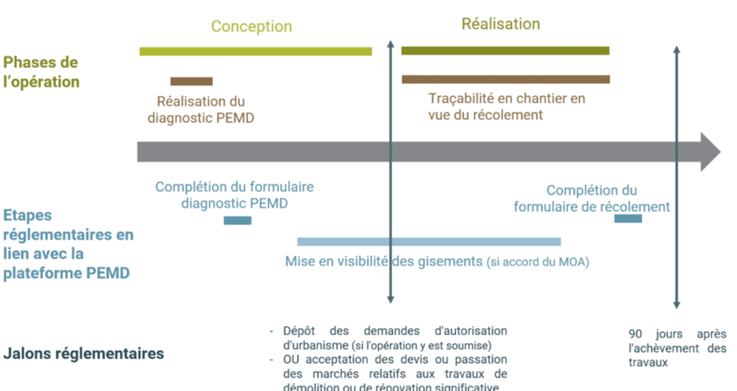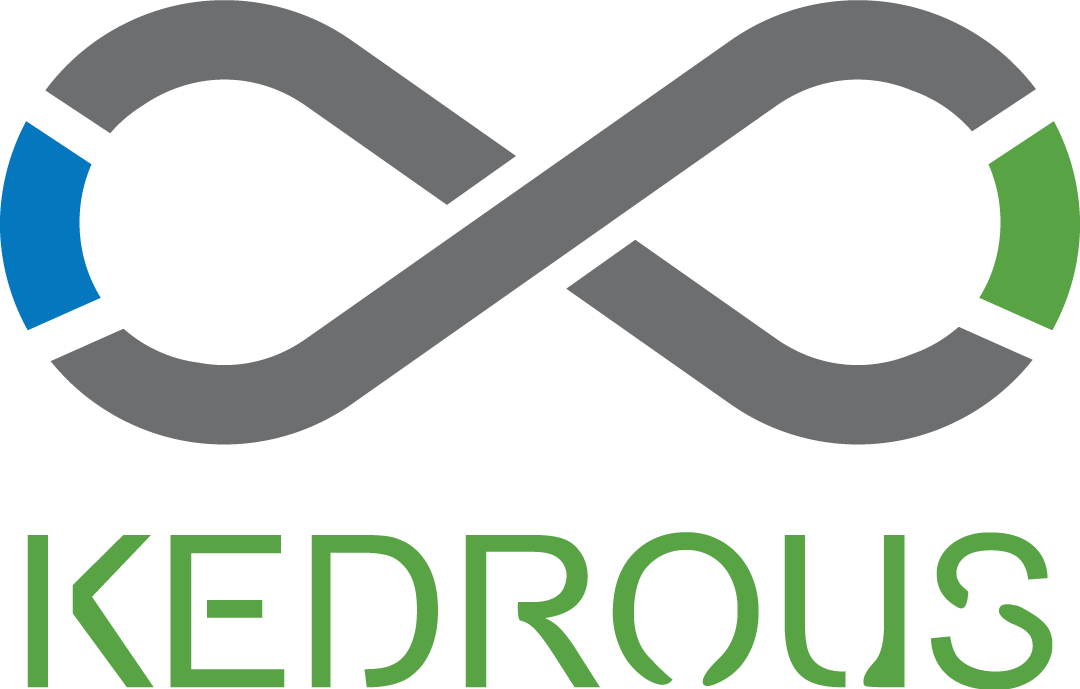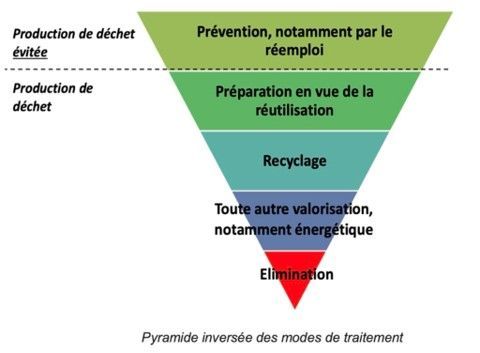Circular Economy
Diagnostics
DPEMD
Diagnostic Resources
PEMD (Products, Equipment, Materials and Waste) Diagnosis
Diagnosis relating to the management of products, equipment, materials and waste from buildings (demolition or significant renovation)
Today, only 1% of waste and rubble from demolition and deconstruction is reused, while 10% of materials could be (source: ADEME). This potential remains largely untapped.
Thanks to PEMD diagnostics, it is possible to optimize materials management by promoting their reuse. This approach reduces environmental impact while optimizing deconstruction costs.
In order to regulate this approach, a new regulatory obligation was introduced by decree no. 2021-872 of June 30, 2021, in application of the AGEC law (Anti-Waste for a Circular Economy), and supplemented by the decree of March 26, 2023.
Since July 1, 2023, project owners must carry out a PEMD diagnosis aimed at identifying and optimizing the management of products, equipment, materials and waste from buildings.
Nature of operations
Demolition, affecting at least half of the floor area of the buildings concerned:
Operations with a cumulative floor area greater than 1,000 m2 (group of buildings on the scale of the operation) or buildings with any surface area having housed one or more dangerous substances (article R4411-6 of the labor code)
Significant renovation:
This involves destroying or replacing more than half of at least two secondary work elements. (lightweight flooring, partitions, frames and joinery, technical installations)
This diagnosis must be carried out before submitting applications for planning permission (construction, demolition, development) or, failing that, before accepting quotes and awarding demolition or renovation contracts.
The label is verified and issued by several certifiers, depending on the type of building

PEMD Diagnosis: Mission Content
This diagnosis must be carried out by an expert in the construction sector, guaranteeing their independence from the project owner and demolition companies. With expertise in building techniques, construction economics, and waste prevention and management, KEDROUS supports project owners and owners in complying with this new obligation by applying a rigorous methodology for carrying out the PEMD diagnosis.
We intervene in 5 stages:
Documentary analysis and site characterization
We review regulatory diagnostics (asbestos, etc.), building DOEs, assessments conducted during operation, as well as plans and other technical documents. This analysis helps identify opportunities for development and any associated constraints.
On-site inspection
We establish a detailed inventory of the materials, equipment, and products present, using advanced digital tools. Each element is analyzed in terms of quantity, dimensions, construction system, condition, and quality. Additional characteristics, such as color, can be taken into account to optimize reuse or recovery opportunities on or off site.
Recommendations and choices of valorization
In accordance with Decree 2021-821 of June 25, 2021, priority is given to the reuse of materials, equipment, and products resulting from deconstruction. When this option is not viable, recovery alternatives are proposed in accordance with the order defined by the Environmental Code.
Presentation of the results of the diagnosis and arbitration
We are organizing a feedback meeting with the entire project team to facilitate the integration of materials with potential for reuse into the operation.
At the end of this presentation, we will provide you with the summary report of the PEMD diagnosis, accompanied by the Product, Equipment and Materials sheets for the identified deposits, as well as the summary table of reusable materials.
Stocktaking meeting – Regulatory review
In accordance with decree 2021-821 of June 25, 2021, an inventory file must be established within three months after the end of the demolition.
We take charge of putting together this file, based on the traceability documents, and transmit it to the CSTB, thus ensuring the regulatory compliance of the operation.




